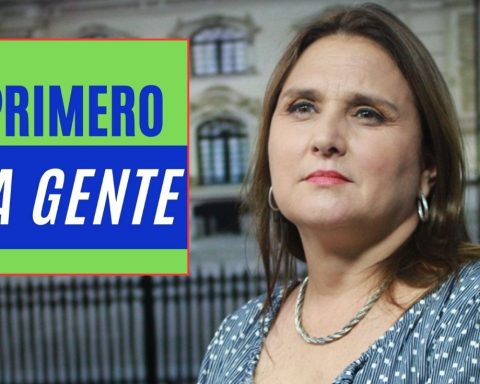Under an increasingly complex environment for the approval of the amount of the General Budget of the Nation (PGN) of 2025whose deadline expires this week, voices have been heard from academia, analysts and Congress asking and demanding to lower the total amount of $523 billion, arguing the excessive increase in operating expenses in recent years, an aspect that is no exception for this project.
Although the Government’s Minister of Finance, Ricardo Bonilla, has argued that these items have inflexibilities by constitutional mandate, such as pensions and territorial transfers, the truth is that when looking at the figures of 231 entities, In several of them, the Executive allocated amounts that imply increases in operating expenses of more than 200%.
This is evident from an analysis carried out by Corficolombiana’s economic research team, which shows that, for example, in the National Mining Agency, the additional $269 billion projected represents an increase of 260.7% compared to the appropriation it had in 2024.
Meanwhile, for 2025, the pre-election year, the projected operating needs of the National Civil Registry will rise by more than $2 billion to reach $3.08 billion, for a percentage variation of 200.7%, while in the Dane Revolving Fund the proposed increase is 158%, for a total of $2.7 billion in this item for the next fiscal year.
However, when breaking down the figures in more detail, even much higher increases appear, as is the case of the Chocó Regional Autonomous Corporation, which would go from having $3.7 billion in 2024 for its operation, to $99.1 billion, a figure that, despite representing a minimal percentage of the total PGN, if approved would mean an increase of 2,604%.
According to the comparative analysis by Corficolombiana economists, the operating expenses of the Ministry of Environment and Sustainable Development are expected to increase by 198.9%, while the National Board of Accountants’ budget will increase by 93.8% to $15.5 billion.
For this analysis exercise, Corfi experts disaggregated the projected expenditure for the 231 entities that are part of the National Government, including administrative units, directorates and regional autonomous corporations.
For reading: Annual inflation in August in Colombia was 6.12%
“Of the 231 entities analyzed, 102 (44%) show an increase in the total budget, while 129 (56%) show a reduction. In operation, of the 231 entities, We found that in 124 there are increases with respect to 2024 that, together, amount to $74.2 billionthat is, an increase of 34%. On the other hand, there are 107 entities that would suffer cuts in their operating budget that amount, in total, to $55.1 billion,” Corficolombiana analysts point out.
Saving
iStock
Three ways to tighten your belt
Taking as a reference the principle of inflexibility that Minister Bonilla mentions so often, the Corficolombiana economic research team reviewed the accounts of the National Budget for the next year, focusing on operating and investment expenses and proposed three scenarios, in which the country could save from $3 billion to more than $16 billion, generating great relief for the State.
“The Ministry of Finance has argued that this adjustment is a consequence of the excessive growth of spending inflexibilities. In fact, it has announced a Financing Bill, or Tax Reform, for an amount of $12 billion to cover the deficit of the 2025 PGN”, they began by commenting, while highlighting that this is not the only way.
Other news: ‘We have enough votes to defeat tax reform’: Congress president

Colombian pesos.
iStock
They explain that for the three proposed paths, in order to avoid a Financing Law, they applied a principle of austerity based on limiting the increase in operating expenses to this year’s inflation rate, with a maximum of two additional points, which would imply an increase of close to 7.6%.
“Thus, a first cross-sectional analysis, independent of the entities, that examines the main items of the budget, such as personnel expenses, the acquisition of goods and services, and transfers, including those destined for pensions and insurance, could generate savings of between $10.9 billion and $11.6 billion,” they first proposed.
The other way is to review spending by entity, highlighting that here we can start by analyzing the entities with the greatest weight in operating expenses, since in this sense “we identified 10 of the 231 entities analyzed that represent 80% of the operating budget assigned in the PGN 2025.”
“On average, these entities show a growth of 15.5%. If their growth is “If the budget is adjusted to 7.6% (except for the Judicial Branch and the National Police, where the changes are more inflexible), $16.8 billion pesos could be cut. However, it is important to be cautious, since some elements could be linked to increases planned for the General Participation System (SGP),” they added.
You may be interested in: Diesel price hike could be transferred to private vehicles such as pickup trucks
It is worth highlighting that Corficolombiana stated that there is currently no way to carry out a detailed audit of the General Budget of the Nation, since the official data only includes general data and does not reach small entities, as they did, to better understand how Colombians’ money is being spent.

Ricardo Bonilla, Minister of Finance and Public Credit
Mauricio Moreno / Portfolio
Atypical growths
The third path that Corfi says can be followed, understanding that there are special casesis to review what they classified as entities that register atypical growth or growth greater than 20%, which although they may be necessary or justified, could be subject to review in the understanding that the country needs to spend less.
“In particular, we found that 18 of the 231 entities project an average growth of 119.3% in 2025 compared to 2024. Adjusting their growth to 7.6%, Potential savings could reach approximately $3 trillion“, they explained.
The report concluded by highlighting that Colombia is going through a time in which its economic situation requires it to be creative and responsible with its spending so as not to jeopardize the fiscal rule, while insisting that there is room for maneuver to implement this plan, thus avoiding the need for tax reform and guaranteeing the financing of the PGN next year. “This is the way to generate confidence and certainty, without compromising economic growth in the coming year,” they concluded.


















